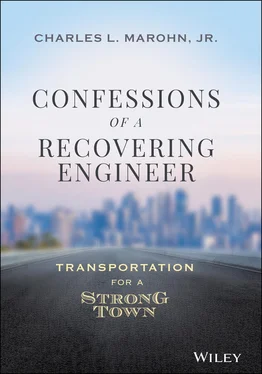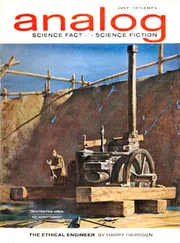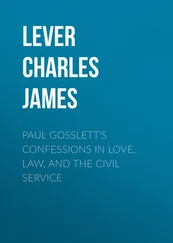The same thing with the restaurant. I knew the family that owned it from way back. They didn't really invest in their own place and, economically, they were being left behind. It was obvious. The whole neighborhood had been officially listed as blighted. It had seen better days, for sure.
Even so, if we were to get growth going out on the edge and get a good, high-capacity street running through here, there was a chance that someone would buy up these old buildings, tear them down, and build something new. That's about the only hope I saw for this neighborhood. The zoning codes wouldn't allow this old stuff to be rebuilt here again anyway. And for good reason.
“Yes, we know. That is why we have planned for a pedestrian overpass on this block.”
“What is a pedestrian overpass?”
“It is a bridge that will allow you to get from one side of the street to the other safely.”
“But I can walk across the street safely right now. My kids can walk across the street safely right now. Why will I need a pedestrian overpass?”
I felt like the answer was obvious here and that, once again, she was almost deliberately trying not to understand. She had just told me that she wanted to cross the street. With all of the additional cars speeding through here, how did she think that was going to happen?
“With four lanes for traffic, you will not be able to walk across the street without slowing down the cars. Slowing down the cars would not be safe.”
“But I am not going to be able to haul my baby stroller up a pedestrian overpass every time I want to cross the street to buy milk. How does this benefit me?”
I was out there working on a project being done for the greater good. All of the safety improvements, all of the new growth that would result, all of the jobs that were going to be created — including mine — were a benefit to the entire region.
Here was one person asking how this benefited them. Did she not see the larger picture? Did she not care? Did she not recognize how selfish she sounded? It was clear to me that I needed to end this conversation.
“You will benefit from the added tax base from the new growth.”
“But the new growth is in a tax subsidy district. How much will they contribute to the tax base?”
“Nothing today, but in 10 or 15 years, they will contribute a lot to the tax base .”
“Why would we make an investment that will not start to pay back for 10 or 15 years? By then, the grocery store will be turned into a dollar store and there will be a new tax subsidy zone.”
There are always people against tax subsidies. Generally, I would be one of them, but I had been in the meetings with investors and developers. I knew that none of this investment was going to happen without the tax subsidies. And if this city didn't have new investment, more places would start to look like this blighted neighborhood.
“If we do not provide the subsidies and invest in improving streets, the growth will not happen. Without growth, our city will die.”
“But if I can't walk across the street to the grocery store, it will go out of business. If I can't walk up the street to go to the restaurant, it will go out of business. Nobody is going to want to buy my house with a highway outside my front door. Do you care that my neighborhood is dying?”
It was precisely because her neighborhood was dying that I was out there. This project was the neighborhood's best hope for revival. If I could get more traffic flowing through here, more people from outside of the neighborhood passing by, this neighborhood would have a chance for some investment. Why couldn't she see that I am part of the solution?
“Yes. That is why we are investing in new growth. That is why we are improving the street.”
She looked past me, off into the distance, one of those long stares that people do when they are collecting their thoughts. I reminded myself that she had a lot to process here. My patiently exhausting her line of questioning was part of that process. I waited for her to speak.
“So how much will this street improvement cost?”
Now we were back on solid ground. I had prepared the cost estimate and knew this answer.
“The total project cost is nine million dollars.”
“Nine million dollars! Our city is broke. We can't afford to keep the streetlights on overnight. We have laid off our fire fighters and half our police force. Where are we getting nine million dollars?”
I understood the sticker shock. This was a large project, especially for this community, but now I had a chance to impress her. All of this new investment, all of these improvements, all of the new growth that would result, and all of the jobs and economic development was going to happen and most of it was being paid by others. As a taxpayer in this city, she was getting a tremendous gift.
“Seven million dollars is stimulus money coming from the state and federal governments. The other two million dollars will be assessed to the property owners that benefit from the project.”
“What does that mean, ‘assessed to the property owners that benefit from the project?’”
Cities are limited in the taxes and fees that they can charge property owners. Some of this limitation comes directly from equal treatment provisions in the U.S. Constitution itself. One exception to treating everyone equally is the assessment process. When assessing, a local government can charge a property owner whatever amount they want to so long as the property value they own increases by that amount.
If the project increases a property's value by, say, $10,000, the city could charge the property owner up to $10,000 for doing that project. The engineering firm where I was employed did this kind of work all the time. In fact, this neighborhood had been so neglected, the public infrastructure in such a state of disrepair, that just having new pavement was likely to improve this woman's property value.
Nonetheless, I dialed back my enthusiasm, reverting to the classic-speak I had heard other engineers use in public hearings on assessments.
“It means that the property owners who benefit will pay a share of the cost.”
“Who is it that benefits from the project?”
“Everyone who is on the street.”
The vacant stare evaporated. She looked me straight in the eyes, a combination of frustration and confusion apparent on her face.
“Wait, are you saying that I benefit from this project and will pay an assessment?”
I again looked down at my shoes. I tapped the ground with my foot, a reflexive behavior.
“Yes. You are one of the benefiting property owners who will be assessed for the project.”
“You must be kidding me. I have a nice quiet neighborhood street today. My kids play in the yard and it is safe. I can walk across the street to the grocery store, or up the street to the restaurant, and it is safe. To make it safer, you are going to flatten, widen, and straighten the street and add two more lanes of fast-moving cars. This is done because of traffic projections — because we want new growth in the tax subsidy area on the edge of town. And while my neighborhood crumbles and my home drops in value, you are going to assess me, too.”
I felt bad for her. She truly didn't get it.
“I'm sorry. But the traffic projections require a four-lane street for safety reasons. We must follow the standard.”
This conversation is a composite of many conversations I participated in during my years of working as a civil engineer and urban planner for cities across Minnesota. The thoughts and words I attribute to myself in this dialogue are all ones I've believed or expressed at one point or another during my career. In 2010, I shared these impressions in a YouTube video I titled, “Conversation with an Engineer.” The eight-minute exchange between two computer animations is now used in university courses and other training sessions. It has been watched over 340,000 times and can now be viewed at www.confessions.engineer.
Читать дальше












